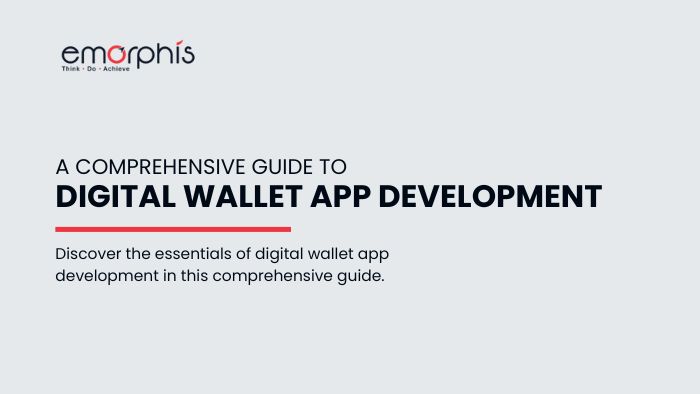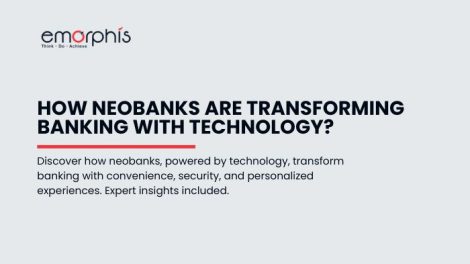Highlights of the Guide to Digital Wallet App Development
- The fundamental concepts and strategies behind digital wallet app development.
- The process of digital wallet app development, from planning to deployment.
- Cost of digital wallet app development.
- Future technology trends shaping the landscape of digital wallet apps.
- AI integration opportunities in digital wallet apps.
Overview
Digital wallet app development is a process that involves creating software for mobile devices or web platforms to facilitate electronic transactions. In fact, the popularity of digital wallets is soaring due to their convenience, security, and efficiency in managing finances. This section provides an overview of digital wallet apps and highlights their importance and benefits.
Digital wallet applications allow users to store, manage, and also transact their money electronically. Instead of carrying physical cash or cards, users can store their payment information securely within the app. In fact, digital wallet apps typically support various payment methods, such as credit/debit cards, bank transfers, and even cryptocurrency.
Let’s first explore the statistics and insights about the digital wallet app market, its projected growth, market value, also user adoption. Here we also check the details on industry beneficiaries, transaction volumes, and finally, its impact on consumer preferences.

Statistics and Insights on Digital Wallet App
According to the Global Market Insights (GMI) report, the digital market industry is expected to witness substantial growth, projected at a rate of 27.4% from 2022 to 2030. By 2027, the volume of the digital payment market is anticipated to soar to $15.17 trillion. Presently, mobile digital payment services are already highly prevalent, with 82% of US consumers utilizing them. Moreover, in the United States alone, there are over 273.76 million smartphones equipped with the capability to utilize e-wallet mobile apps.
According to Statista insights, the global digital payments market, valued at approximately $4 trillion in 2020, is projected to surpass $10 trillion by 2026. Additionally, by 2030, it is forecasted to soar well beyond $607.9 billion in the US alone.
According to Juniper Research report, the global number of digital wallet users surged from 4 billion in 2022 to 5.2 billion in 2026, marking a remarkable growth of 53%. Moreover, over 65% of US citizens have utilized digital wallets at least once in the past month, underscoring the widespread popularity and adoption of these payment methods.
Retail and eCommerce emerge as the primary beneficiaries of the eWallet market, commanding a substantial 30% global market share, according to Grandview Research report. Back in 2022, digital wallets claimed the lion’s share of global PoS transactions at 32%, solidifying their status as the preferred payment method. In the US, popular eWallet apps such as PayPal, Apple Pay, and Google Pay dominate the market landscape.
The Digital Wallet App is also known as the eWallet app
Juniper Research’s insights into the eWallet app market forecast an impressive escalation in digital wallet transactions, expected to surge from $9 trillion in 2023 to exceeding $16 trillion by 2028. This substantial growth heralds a transformative shift in global financial dynamics, shaping the future of digital transactions.
At the forefront of the American Fintech market, a 2023 Forbes study steals the spotlight, unveiling that 53% of Americans have embraced digital wallets as their preferred payment method, surpassing traditional credit and debit cards. This shift underscores the profound impact of the digital revolution, reshaping consumer preferences nationwide.
Importance and Benefits
The importance of digital wallet app development lies in its ability to revolutionize the way people conduct financial transactions. In fact, it offers a convenient and secure alternative to traditional payment methods. Moreover, digital wallets empower users to make purchases and send money to friends, and family. Also, it helps manage their finances on the go.
Some key benefits of digital wallet apps include:
- Convenience: Users can make payments anytime, anywhere, using their mobile devices.
- Security: Digital wallets employ advanced encryption techniques to safeguard sensitive financial information.
- Efficiency: Transactions are processed quickly, reducing the need for manual input and paperwork.
Let us now check various aspects of digital wallet app development. Which includes market analysis, planning and strategy, design, development, testing, deployment, also, marketing, and maintenance. Each stage is crucial for ensuring the success of a digital wallet app in a competitive market landscape.

10 Stages of Digital Wallet App Development
Stage 1 – Market Analysis
Before embarking on digital wallet app development, it’s essential to conduct a comprehensive analysis of the market landscape. In fact, this helps to understand the current trends, competition, and potential opportunities. Let’s check the key steps involved in market analysis for digital wallet apps.
1.1 Research on Existing Digital Wallet Apps
Start by researching existing digital wallet apps in the market. Analyze their features, user experience, target audience, and monetization strategies. Identify both direct competitors offering similar services and indirect competitors providing alternative payment solutions.
1.2 Identifying Target Audience and Competitors
Identify your target audience by analyzing demographics, behavior, and preferences. Understand their pain points and preferences when it comes to digital payments. Additionally, analyze your competitors’ target audience and their strategies for customer acquisition and retention.
1.3 Trends and Opportunities
Stay updated on the latest trends and innovations in the digital payments industry. Explore emerging technologies such as blockchain, biometrics, and contactless payments that could shape the future of digital wallet apps. Identify untapped market segments or niche opportunities where your digital wallet app can differentiate itself and provide unique value.
By conducting a thorough market analysis, you’ll gain valuable insights that will inform the development strategy. And also it will help you position the digital wallet app effectively in the competitive landscape.
Stage 2 – Planning and Strategy
Digital wallet app development requires meticulous planning and strategic decision-making to ensure the project’s success. This section outlines the essential steps involved in planning and strategizing for the development process.
2.1 Defining Objectives and Goals
Begin by clearly defining the objectives and goals of the digital wallet app development project. Consider what you aim to achieve with the app, whether it’s increasing revenue, expanding user base, or improving customer experience. Set specific, measurable, achievable, relevant, and time-bound (SMART) goals to guide your development efforts effectively.
2.2 Choosing the Right Technology Stack
Selecting the appropriate technology stack is crucial for a digital wallet app. Determine the platforms you want to target that is iOS, Android, and Web. After the same, choose the programming languages, frameworks, and libraries best suited for each platform. Take into account scalability, security, and compatibility with third-party integrations.
2.3 Budget Estimation and Resource Planning
Estimate the budget required for digital wallet app development. In fact, it can be done by taking into account expenses such as software development. Also, design, testing, marketing, and maintenance. After the same allocate resources effectively, including human resources. This would include developers, designers, testers, time, and budget, to ensure timely delivery and optimal utilization of resources.
Establishing clear objectives, selecting the right technology stack, also planning the budget and resources effectively. Moreover, you’ll lay a solid foundation for the successful development of a digital wallet app. Let us now check the design, development, testing, deployment, marketing, and maintenance phases of the project. Moreover, each is essential for bringing the digital wallet app to market and ensuring its long-term success.
Stage 3 – User Interface (UI) Design
The user interface (UI) design of a digital wallet app plays a crucial role in attracting users. Moreover, providing them with a seamless and intuitive experience. This section outlines the key considerations and steps involved in designing the UI for a digital wallet app.
3.1 Wireframing and Prototyping
Start the UI design process by creating wireframes and prototypes of the digital wallet app. Wireframes serve as blueprints that outline the layout and structure of each screen, focusing on functionality rather than aesthetics. Prototypes, on the other hand, provide interactive mockups that allow stakeholders to visualize the user flow and interactions.
3.2 Creating User-Friendly Interfaces
Craft intuitive interfaces that prioritize simplicity, clarity, and consistency for an optimal user experience. Ensure that essential features such as account balance, transaction history, and payment options are easily accessible and intuitive to use. Use familiar design patterns and conventions to minimize user friction and enhance usability.
3.3 Designing for Various Platforms
Consider the unique characteristics and guidelines of each platform iOS, Android, and Web. This is needed when designing the UI of the digital wallet app. Tailor the interface elements, navigation patterns, and also visual style to align with the platform’s design principles. In fact, this is needed while maintaining a cohesive brand identity across all platforms.

Stage 4 – User Experience (UX) Design
In addition to the visual design, the user experience (UX) of a digital wallet app is critical for ensuring user satisfaction and retention. This section explores the key principles and strategies for designing a seamless and delightful user experience.
Design intuitive navigation flows that guide users through the app effortlessly. Minimize the number of steps required to perform common tasks such as making payments or checking account balances. Use clear signposts, breadcrumbs, also visual cues to help users. In fact, this is to understand where they are in the app and how to navigate to their desired destination.
4.2 Seamless and Secure Transactions
Prioritize the security and reliability of transactions to build trust with your users. Implement robust encryption protocols and security measures to protect sensitive financial information. Provide clear feedback and confirmation messages to reassure users that their transactions have been completed successfully.
4.3 Accessibility Considerations
Ensure that the digital wallet app is accessible to users of all abilities, including those with disabilities. Design with accessibility standards in mind, such as providing alternative text for images. Also, using high contrast colors for readability, and ensuring keyboard navigation is available for users who rely on it. By designing inclusively, you can reach a broader audience and enhance the overall user experience of a digital wallet app.
It is important to focus on user-centric design principles. Also to prioritize both the visual design and user experience of your digital wallet app. This in fact gives you in turn a compelling and intuitive interface that delights users and encourages engagement. Let us now explore the development, testing, deployment, marketing, and maintenance phases. In fact, each is crucial for bringing your digital wallet app to market and ensuring its long-term success.
Stage 5 – Development
Once the planning and design phases are complete, the development phase of digital wallet app development begins. This section outlines the key steps involved in bringing your digital wallet app to life through coding and implementation.
5.1 Frontend Development
In frontend development, the user interface (UI) design is translated into code using programming languages such as HTML, CSS, and JavaScript for web-based apps. Similarly languages like Swift for iOS or Kotlin for Android for mobile apps. In fact, frontend developers focus on creating interactive and responsive interfaces. Which as a matter of fact, delivers a seamless user experience across different devices and screen sizes.
5.2 Backend Development
Backend development involves building the server-side logic and infrastructure that powers the digital wallet app. Backend developers use languages and frameworks such as Node.js, Python, Ruby on Rails, or Java. In fact, this is to create the backend services, databases, APIs, and server architecture required to support the app’s functionality. They implement features such as user authentication, transaction processing, data storage, and integration with external systems like payment gateways.
5.3 Integration with Payment Gateways and APIs
Integrate a digital wallet app with third-party payment gateways and APIs to enable secure and seamless transactions. Payment gateway integration allows users to link their bank accounts, credit/debit cards, or other payment methods to the app. In fact, this helps in making payments or transfers securely. Additionally, integrate APIs for services such as identity verification, fraud detection, or currency conversion. This will help to enhance the functionality and reliability of your digital wallet app.
5.4 Implementing Security Measures
Implement robust security measures throughout the development process to protect user data and financial transactions. Utilize encryption techniques to secure sensitive information. Also, implement secure authentication methods such as two-factor authentication (2FA) or biometric authentication. Furthermore, adhere to industry best practices for data privacy and security. Regularly conduct security audits and testing to identify and address any vulnerabilities or weaknesses in the digital wallet app.
Hence, focusing on frontend and backend development, integrating with payment gateways and APIs. Also, by implementing stringent security measures, you can build a robust and reliable digital wallet app.
Now let us explore testing, deployment, marketing, and maintenance. In fact, each is essential for bringing your digital wallet app to market and ensuring its long-term success.
Stage 6 – Testing
Testing is a crucial phase in digital wallet app development to ensure its functionality, performance, and security meet the highest standards. This section outlines the key testing processes and considerations involved in ensuring the quality and reliability of your app.
6.1 Functional Testing
Conduct functional testing to verify that all features and functionalities of the digital wallet app work as intended. Test various scenarios, including account registration, payment processing, transaction history, and account management, to ensure seamless user interactions. Identify and address any bugs, errors, or inconsistencies in the app’s functionality to deliver a smooth user experience.
6.2 Performance Testing
Perform performance testing to assess the responsiveness, speed, and scalability of your digital wallet app under different conditions. Test the app’s performance under normal usage. In fact, also on peak loads to ensure it can handle a high volume of transactions without slowdowns or crashes. Moreover, monitor key performance indicators such as response time, server uptime, and also transaction processing speed. This in fact helps to identify and resolve any performance bottlenecks.
6.3 Security Testing
Conduct comprehensive security testing to identify and mitigate potential vulnerabilities and threats to the digital wallet app. Test for common security issues such as SQL injection, cross-site scripting (XSS), and authentication bypasses. Perform penetration testing to simulate real-world attacks and assess the resilience of your app’s defenses. Implement security measures such as encryption, secure authentication, and data validation. In fact, this helps to protect user data and transactions from unauthorized access or manipulation.
6.4 User Acceptance Testing (UAT)
Engage real users or test groups to perform user acceptance testing (UAT) on a digital wallet app. Gather feedback and insights from users on their experience using the app, including usability, intuitiveness, and satisfaction. Address any usability issues, pain points, or suggestions for improvement identified during UAT. In fact, this helps to enhance the overall user experience and ensure user satisfaction.
By conducting thorough functional, performance, and security testing, as well as engaging users in the user acceptance testing (UAT) process. You can identify and address any issues or concerns before launching a digital wallet app to the market.
Let us now explore deployment, marketing, and maintenance. In fact, each is essential for bringing your digital wallet app to market and ensuring its long-term success.

Stage 7 – Deployment
Once testing is complete and your digital wallet app is ready for release, the deployment phase involves making the app available to users through app stores or web platforms. This section outlines the key steps involved in deploying a digital wallet app and making it accessible to your target audience.
7.1 Publishing to App Stores
For mobile apps, publishing to app stores such as the Google Play Store for Android or the Apple App Store for iOS is essential to reach a wide audience of users. Prepare the necessary app store listings, including app descriptions, screenshots, icons, and promotional materials, adhering to the respective store’s guidelines and requirements. Submit your app for review and approval, ensuring compliance with app store policies and guidelines.
7.2 Web Deployment
If the digital wallet app is web-based, deploy it to web hosting servers to make it accessible via web browsers on desktop and mobile devices. Ensure that your web hosting environment meets the necessary requirements for hosting web applications securely and reliably. Test the deployed app across different web browsers and devices to ensure compatibility and optimal performance.
Stage 8 – Marketing and Launch
Marketing plays a crucial role in promoting a digital wallet app and attracting users to download and use it. This section outlines the key marketing strategies and tactics to effectively launch your app and drive user adoption.
8.1 Creating Promotional Materials
Develop compelling promotional materials such as app trailers, teaser videos, screenshots, and promotional graphics to showcase the features and benefits of a digital wallet app. Use engaging visuals and persuasive messaging to capture users’ attention and generate interest in downloading and using the app.
8.2 App Store Optimization (ASO)
Optimize your app store listings using app store optimization (ASO) techniques to improve visibility and discoverability in app store search results. Research relevant keywords and phrases related to digital wallet apps and include them strategically in your app title, description, and metadata. Encourage users to leave positive reviews and ratings to enhance your app’s credibility and ranking in the app store.
8.3 Launch Campaign Strategies
Plan and execute targeted launch campaigns to generate buzz and excitement around your digital wallet app. Utilize social media platforms, email marketing, press releases, and influencer partnerships to reach your target audience and drive app downloads. Offer promotional incentives such as discounts, rewards, or referral bonuses to incentivize users to download and try out the app.
8.4 User Acquisition and Retention Plans
Develop user acquisition and retention strategies to attract new users to your digital wallet app and keep them engaged over time. Implement user acquisition tactics such as paid advertising, app store optimization, content marketing, and social media engagement to attract new users. Additionally, implement retention strategies such as personalized notifications, loyalty programs, and regular updates to encourage users to continue using the app and remain loyal customers.
By deploying your digital wallet app to app stores or web platforms and implementing effective marketing and launch campaigns, you can maximize its visibility and reach, attract users, and drive app downloads. In the following section, we’ll explore maintenance and updates, essential for ensuring the long-term success and sustainability of your digital wallet app.

Stage 9 – Maintenance and Updates
After the successful deployment and launch of your digital wallet app, ongoing maintenance and updates are essential to ensure its functionality, security, and relevance to users. This section outlines the key aspects of maintaining and updating your app to ensure its long-term success.
9.1 Monitoring App Performance
Regularly monitor the performance of your digital wallet app to identify any issues or anomalies that may affect user experience or app functionality. Utilize analytics tools to track key performance indicators such as app downloads, user engagement, conversion rates, and user feedback. Monitor server uptime, response times, and error rates to ensure optimal performance and reliability.
9.2 Bug Fixing and Troubleshooting
Address any bugs, errors, or technical issues that arise in your digital wallet app promptly. Establish processes for reporting and prioritizing bugs, and allocate resources to address them promptly. Conduct thorough testing and debugging to identify the root causes of issues and implement effective solutions to resolve them. Communicate transparently with users about bug fixes and updates to maintain their trust and confidence in the app.
9.3 Regular Updates and Enhancements
Continuously update and enhance your digital wallet app to introduce new features, improve existing functionalities, and address user feedback. Gather insights from user reviews, feedback surveys, and usage data to identify areas for improvement and prioritize feature development. Release regular updates and patches to keep the app secure, up-to-date with industry standards, and aligned with user expectations.
9.4 Security Patches and Compliance
Stay vigilant about security threats and vulnerabilities in your digital wallet app and implement timely security patches and updates to mitigate risks. Stay informed about emerging security threats and compliance requirements, and proactively address them to ensure the security and integrity of user data and transactions. Adhere to industry regulations and standards such as PCI DSS and GDPR to protect user privacy and maintain compliance with legal requirements.
9.5 User Support and Communication
Provide responsive and effective user support to address user inquiries, issues, and concerns related to your digital wallet app. Offer multiple channels for users to reach out for support, such as in-app chat, email, or a dedicated support portal. Communicate proactively with users about app updates, new features, and any changes that may affect their user experience to keep them informed and engaged.
By prioritizing maintenance and updates, addressing bugs and technical issues promptly, and continuously improving the app based on user feedback and industry standards, you can ensure the long-term success, relevance, and sustainability of your digital wallet app in a competitive market landscape.

Stage 10 – Legal and Compliance
Ensuring compliance with relevant laws, regulations, and industry standards is crucial for the success and longevity of your digital wallet app. This section outlines the key legal and compliance considerations to protect user data, maintain trust, and mitigate potential risks.
10.1 Data Protection Regulations
Ensure compliance with data protection regulations like GDPR, CCPA, and other relevant laws governing data privacy. Implement robust data protection measures to safeguard user data against unauthorized access, use, or disclosure. Obtain explicit consent from users before collecting, processing, or storing their personal information, and provide transparency about how their data will be used.
10.2 Secure Storage of User Data
Implement secure storage practices to protect user data stored within your digital wallet app. Encrypt sensitive data such as payment information, passwords, and personal details to prevent unauthorized access or data breaches. Store data on secure servers with strong access controls, regular security audits, and backups to ensure data integrity and availability.
10.3 Terms of Service and Privacy Policy
Create clear and comprehensive terms of service and privacy policy documents for your digital wallet app. Clearly outline the rights and responsibilities of users and the app provider, including terms of use, data collection and usage practices, liability limitations, and dispute resolution mechanisms. Ensure that your terms of service and privacy policy are easily accessible within the app and prominently displayed during the onboarding process.
10.4 Regulatory Compliance
Stay informed about regulatory requirements and compliance obligations relevant to digital wallet app development and operation. Depending on your app’s features and functionalities, you may need to comply with regulations governing financial services, electronic payments, consumer protection, anti-money laundering (AML), and know-your-customer (KYC) requirements. Consult legal experts or regulatory advisors to ensure compliance with applicable laws and regulations.
10.5 Risk Management
Implement risk management strategies to identify, assess, and mitigate potential legal and compliance risks associated with your digital wallet app. Conduct regular risk assessments to evaluate potential risks such as data breaches, regulatory violations, fraud, or litigation, and develop contingency plans to address them. Stay proactive in monitoring legal developments and industry trends to adapt your compliance practices accordingly and minimize legal exposure.
By prioritizing legal and compliance considerations, you can build trust with users, also protect their privacy and security. Moreover, mitigates legal and regulatory risks associated with your digital wallet app. In fact, compliance with data protection regulations, secure storage of user data, transparent terms of service and privacy policies, and proactive risk management are essential for the success and sustainability of your app in today’s regulatory environment.

Now let us take a look at what the future holds for the digital wallet app
Future technology in Digital wallet app development
The future of digital wallet app development is poised to be shaped by several emerging technologies. Here are some key trends and technologies that are expected to influence the evolution of digital wallet apps:
a. Blockchain Technology
Blockchain offers decentralized and secure transaction processing, making it ideal for digital wallets. Implementing blockchain technology can enhance security, transparency, and trust in digital wallet transactions by providing immutable and tamper-proof transaction records.
b. Biometric Authentication
Biometric authentication methods such as fingerprint scanning, facial recognition, and iris scanning offer a more secure and convenient way for users to access their digital wallets. Integrating biometric authentication enhances security while improving the user experience by eliminating the need for passwords or PINs.
c. Near Field Communication (NFC)
NFC technology enables contactless payments by allowing users to make transactions by simply tapping their mobile devices or cards on NFC-enabled terminals. Moreover, integrating NFC technology into digital wallet apps enhances convenience and speed of transactions, particularly in retail and transit environments.
d. Artificial Intelligence
AI and ML technologies can be leveraged in digital wallet apps for personalized recommendations, fraud detection, and risk assessment. In fact, by analyzing user behavior and transaction patterns, AI-powered digital wallets can offer tailored financial insights and proactive security measures.
e. Internet of Things (IoT)
The integration of digital wallets with IoT devices such as smartwatches, connected cars, and home appliances enables seamless and contextual payments. IoT-enabled digital wallets can automate transactions based on predefined triggers or user preferences, further enhancing convenience and efficiency.
f. Cryptocurrency Integration
With the growing popularity of cryptocurrencies, digital wallet apps may increasingly support the storage and management of digital assets such as Bitcoin, Ethereum, and other cryptocurrencies. Integrating cryptocurrency wallets within digital wallet apps expands the range of financial assets users can manage within a single platform.
g. Contactless and Wearable Payments
The adoption of contactless payment methods and wearable devices is on the rise, driving the demand for digital wallet apps that support these payment modes. Digital wallet apps may evolve to support a wider range of contactless payment options, including wearable devices such as smartwatches and fitness trackers.
h. Augmented Reality (AR) and Virtual Reality (VR)
AR and VR technologies can enhance the shopping and payment experience within digital wallet apps by providing immersive and interactive shopping environments. Users can visualize products, try them virtually, and make purchases seamlessly within the app using AR and VR features.
i. Voice-activated Payments
Voice-activated payment technologies enable users to initiate transactions and manage their digital wallets using voice commands. Integrating voice recognition and natural language processing capabilities into digital wallet apps enhances accessibility and convenience for users, particularly in hands-free scenarios.
j. Hyper-personalization
Digital wallet apps of the future may leverage big data analytics and predictive algorithms to deliver hyper-personalized financial services and recommendations. By analyzing user data and preferences, digital wallets can offer tailored offers, financial advice, and savings suggestions tailored to individual users’ needs and goals.
Overall, the future of digital wallet app development lies in leveraging emerging technologies to enhance security, convenience, and personalization while adapting to evolving user preferences and market trends. Incorporating these technologies into digital wallet apps can unlock new opportunities for innovation and differentiation, driving the continued evolution of digital payments and financial management solutions.

How AI Integration in Digital wallet app development can enhance the features?
Integrating artificial intelligence (AI) into digital wallet app development can significantly enhance its features and capabilities in several ways:
i. Personalized Financial Insights
AI algorithms can analyze users’ spending patterns, saving habits, and financial goals to provide personalized financial insights and recommendations. By understanding users’ financial behaviors, AI-powered digital wallets can offer tailored advice on budgeting, saving, and investing, helping users make informed financial decisions.
ii. Predictive Analytics
AI can leverage predictive analytics to forecast users’ future expenses, cash flow, and investment returns based on historical data and market trends. By anticipating users’ financial needs and challenges, digital wallets can proactively suggest strategies to optimize their finances and mitigate risks.
iii. Fraud Detection and Prevention
AI algorithms can detect suspicious activities, unusual spending patterns, and potentially fraudulent transactions in real-time, enhancing security and fraud prevention in digital wallets. By continuously monitoring users’ transactions and behavior, AI-powered digital wallets can flag and block unauthorized transactions, protecting users’ funds and sensitive information.
iv. Customer Support and Chatbots
AI-powered chatbots can provide instant assistance and support to users within the digital wallet app. By leveraging natural language processing (NLP) and machine learning, chatbots can answer users’ queries, troubleshoot issues, and guide them through various features and functionalities of the app, enhancing the overall user experience.
v. Voice-Activated Commands
Integrating voice recognition technology into digital wallet apps enables users to perform various tasks and transactions using voice commands. AI-powered voice assistants can understand and execute users’ instructions, such as checking account balances, transferring funds, or making payments, hands-free, and seamlessly.
vi. Behavioral Biometrics
AI algorithms can analyze users’ behavioral biometrics, such as typing patterns, navigation gestures, and device usage habits, to enhance authentication and security in digital wallets. By continuously learning and adapting to users’ behavior, AI-powered authentication systems can identify and prevent unauthorized access attempts more effectively than traditional methods.
vii. Smart Expense Categorization
AI can automatically categorize users’ expenses based on transaction data, merchant information, and contextual clues. By organizing transactions into categories such as groceries, dining, entertainment, and utilities, digital wallets can provide users with a clear overview of their spending habits and help them track expenses more efficiently.
viii. Smart Savings and Investment Suggestions
AI algorithms can analyze users’ financial goals, risk tolerance, and investment preferences to offer personalized savings and investment suggestions. Digital wallets can recommend suitable savings accounts, investment portfolios, or financial products based on users’ profiles and objectives, helping them achieve their financial goals faster and more effectively.
Overall, AI integration in digital wallet app development enhances the features and functionalities of the app by providing personalized insights, predictive analytics, advanced security measures, and seamless user experiences. By leveraging the power of AI, digital wallets can become intelligent financial assistants that empower users to manage their finances more effectively and achieve their financial aspirations.
Cost of digital wallet app development
The cost of digital wallet app development varies depending on several factors such as features, complexity, platform, technology stack, and development team’s rates.
The cost of digital wallet app development typically ranges from $20,000 to $100,000 or more, depending on the complexity and scope of the project. Basic digital wallet apps with essential features may fall on the lower end of the spectrum, while more advanced apps with additional functionalities such as biometric authentication, AI integration, and cryptocurrency support may require a higher investment.
Additionally, factors such as design complexity, third-party integrations, security measures, and ongoing maintenance also contribute to the overall cost.
It’s essential to work with a reputable development partner like Emorphis who can provide a detailed cost estimation based on your specific requirements and budget constraints.

Conclusion
Digital wallet app development is a complex yet rewarding process. By following a structured approach encompassing market analysis, strategic planning, meticulous design and development, rigorous testing, effective deployment, targeted marketing, and strict legal compliance, you can create a successful digital wallet app. Continuous monitoring, updates, and user feedback integration are vital for maintaining relevance and trust in a competitive market. With dedication and adaptability, your digital wallet app can provide users with a seamless and secure financial management experience while achieving long-term success.
Choosing Emorphis Technologies for digital wallet app development offers a myriad of advantages. Specializing in financial solutions, Emorphis brings a wealth of expertise to the table, ensuring compliance, security, and usability tailored to your specific requirements. Their innovative approach incorporates cutting-edge technologies like blockchain, AI, and biometrics, enhancing security, convenience, and user experience.
With a focus on customization and flexibility, Emorphis delivers highly adaptable solutions, whether you need a basic wallet app or a feature-rich platform. They provide end-to-end development services, from concept to deployment and maintenance, ensuring a seamless process.
Emphasizing quality assurance and testing, Emorphis guarantees the highest standards of performance, security, and reliability. Transparent communication and collaboration are at the core of their process, keeping you informed and involved every step of the way.
With a proven track record of successful projects in fintech app development, Emorphis is the ideal partner to realize your digital wallet app vision, driving your success in the digital payments landscape.







